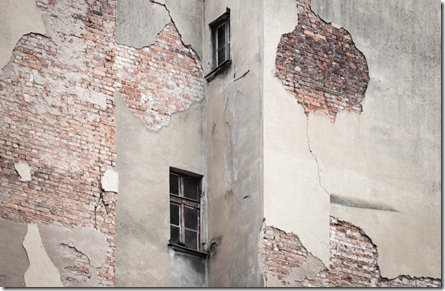Are the Cracks in Orthodox Safety Becoming Chasms?
 My Worldview
My Worldview
As with all the things I write and talk about, this comes through my own worldview, which is a social psychological one. I believe that we are fundamentally connected and social creatures, and almost everything depends on context.
The Fragility of Orthodoxy
With that said, and in my opinion, it hasn’t taken much (well, except a global pandemic) to highlight how fragile our orthodox approach to safety has become. These uncertain and dynamic times have of course shocked us, and have lead to a point that none of us could have ever imagined a mere month ago (except some of the researchers who predicted this…). Certainly in my world, this is an existential crisis.
But what of orthodox safety? What of our robust and integrated systems approaches? What of our planning, assessing, auditing, documenting and compliance? Are these systems and approaches serving us now? Because I would argue that if the concepts were solid, then they should still hold up. The ideas and ideologies should work, and in fact should become more important and vital at times of crisis, because we are still talking about protecting people right?
So let’s look at just a few examples (I’m sure there are more by the way, these are just in my head right now):
Zero Harm – Could we apply a Zero Harm approach to the current decisions being made? Would it work and what result would it give? My thoughts are that it would be meaningless and useless. The decisions being made now are very much a case of trade-offs and compromises in terms of balancing harm to individuals, society, communities, public systems (health, welfare, tax, immigration, education, policing), and the economy. There will be harm, it’s just about where and how much. Not once have I heard anyone mention zero because I think they know they would be laughed off the stage. In fact, a client I was chatting to this week (whose organisation uses a zero harm approach) talked about how much the idea of care has become central to the decision making within the leadership team, and how no one is talking about harm right now.
Regulating – How do regulators respond to this brave new world? Should it be business as usual because “safety is always our number one priority”, or “the law is the law”, or will they need to change the way they regulate. Turns out, they are changing the way they regulate, as outlined in this statement. Our national body of WHS is saying (on behalf of State Regulators) that a “common sense and practical approach” will be taken. They are going to focus on things that pose a “serious risk”. My question is, what were they doing before?
Risk Matrices – I wonder how often a risk matrix is being looked at by managers and leaders right now? I suspect not very much. This isn’t saying a risk matrix can’t be useful, more that over time the matrix has been inserted into every risk decision point as if it is the golden child. Yet now, when things are critical, I suspect it is being left in the cupboard (or on the hard drive). I suspect it’s because of the amount of uncertainty. I mean, how could you make a consequence or likelihood judgement at this time? But I also suspect that we kid ourselves under normal operation about the level of certainty we think we have.
Hold the Handrail – To be fair I saw this myself on another LinkedIn post (apologies to the original author, I can’t find it, and have no idea how to go back into my feed more than a day to locate it…), but what a great example of the oversimplification of safety. Now we see that holding the handrail exposes us to risk, as well as managing risk (although that is a separate debate). All the current advice is telling us to not hold the handrail. Will we see a huge increase in injuries from falling down stairs? Will we see a requirement to use PPE to hold the handrail in a vague attempt at holding together the tension between risks here?
So What?
Over time, we have added fragility to our systems and approaches by loading them with procedures, rules, policies, forms, checklists, sign-offs and compliance, and then thinking that that is what keeps us safe. It’s this last point I would ask you to reflect on. Fragility in itself isn’t always bad, what is a problem is not being aware of it building.
This crisis has surely shown us that being safe and healthy has nothing to do with whether we passed an audit, ticked a box, or have a certificate. This things are part of the story, but they are not the end result. The tradeoffs and compromises are always there, we just don’t talk about them because it uncovers the uncertainty and fallibility that is all around us, and who wants to do that right?
Final Word
It is at times like this that our fundamental and ingrained systems of work should support us, but I don’t think that is what’s happening. So in this space I invite us all to reflect.
I’m not suggesting that now isn’t the time to chuck it all out. Now is the time to care for each other and do what needs to get done to protect as many as possible. But when we come out the other side, there is an opportunity to reset things and remember what was actually of value when the shit hit the fan.
Dave Whitefield – Culture & Engagement Specialist



Suzanne Jackson says
Of course there are steadfast safety people still monitoring the holding of the handrail. They don’t give up that easily because the holding is now to be followed by the hand sanitization. There’s just more behaviour to police. The pandemic has been assessed, the risk numbers are written down and the numbers can still confirm the workplace is once again safe as long as the people behave accordingly. The irony of all this is not as obvious to those who have drank the kool aid.
Richard Flynt says
An excellent thought-provoking post! Thank you.
bernardcorden says
I wonder if wearing face masks will appeal to Muslim women and Islamic standards of modesty.
Rob Long says
It doesn’t matter how you take down sacred cows.
bernardcorden says
The chasm between securing the health and safety of people at work and deification of the Friedman doctrine has always been present.
Frank Garrett says
Great Post Dave, Leonard Cohen Said it best.
There is a crack in everything. That’s how the light gets in.
I hope, and will push for a reset when this all returns to some semblance of normalcy.
Thanks For this!
Frank